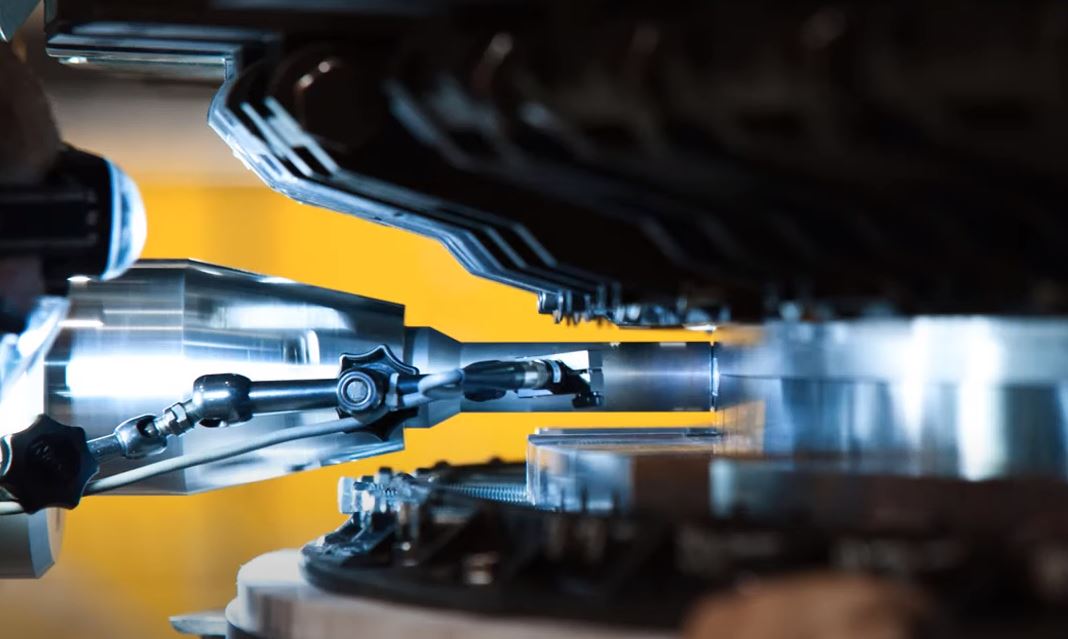Ultrasonic welding is primarily used to join thermoplastics and can be employed in the manufacturing of various products, ranging from toys to packaging or automotive components.
To apply this technique, it is essential to consider specific equipment and material requirements, which are crucial for its proper implementation. Therefore, we will now explain the underlying physical principle of this method, its applications, and provide an overview of the most commonly used plastics.
What is ultrasound?
Sound is the vibration that propagates through space as an acoustic wave, through a medium such as water or air. For example, when the strings of a guitar are played, pressure and air oscillations are created, which expand into waves in all directions.
In the case of ultrasound, sound waves have a high frequency (ranging from 20 kHz to 1 GHz), making them imperceptible to humans. This type of technology is used in the field of medicine and in the industrial sector.
For welding, frequencies ranging from 20 to 70 kHz are used. This frequency range is not audible to the human ear, which can only perceive sounds from 16 Hz to 20 kHz. When the oscillations exceed this frequency range, they are perceived as vibrations.
Ultrasonic welding for plastics works by bringing ultrasonic waves into contact with the material. In this case, the molecules of the material begin to move, resulting in friction between them. This generates energy in the form of heat, causing the materials to melt.
Ultrasonic welding system
To carry out ultrasonic welding, an integrated system consisting of active and passive components is used. The active components produce the sound waves, direct them, and introduce them into the material to be welded, while the passive components absorb and hold the pieces in position.
The active components include the ultrasonic generator, transducer, amplitude transformer (amplifier or amplitude coupler), and the sonotrode (welding tool). The passive elements consist of the housing and the anvil.
These are the basic components. However, it’s important to note that these equipment can vary depending on the geometry of the piece, the type of plastic, the cycle duration, etc. Primarily, the material of the sonotrode and the number of sonotrodes will also vary.
Additionally, the vibration frequency and power of the system are adjusted, which change depending on the plastic being welded. It should be noted that in order to join two materials, they must be chemically compatible. If not, even if both materials melt, there will be no molecular bond.
Examples of ultrasonic welding applications
Ultrasonic welding can be used to manufacture various types of parts. One of the advantages of this technique is that it allows for joining pieces without using auxiliary components such as screws or adhesives. This makes it possible to create toys, packaging, weld automotive parts, and more. Here are some of its most popular applications:
- Integrating filter membranes into medical components.
- Riveting materials of different species, for example, for airbags.
- Welding injection-molded parts, such as automotive components.
- Embedding leather into other fabrics, for example, in the production of automotive air filters.
- Embedding female connections into magnets for sensor actuation.
Materials most commonly used in welding
Ultrasonic welding is widely used in the plastics industry for joining pieces. The most commonly used plastics include polyethylene, PVC, polypropylene, polycarbonate, among others.
- PP (polypropylene): It is used to manufacture packaging, textiles, pipes, and automotive components. It is a low-cost material with good acoustic energy absorption capability, making it easy to weld.
- PE (polyethylene): Similar to polypropylene, this thermoplastic is used in many applications, primarily for packaging. It also has good acoustic energy absorption capacity.
- PC (polycarbonate): It is used to manufacture lenses, automotive components, displays, and electronic equipment casings. It has good acoustic energy absorption capacity and is quite durable.
- PVC (polyvinyl chloride): It is widely used for manufacturing pipes, doors, and windows. It is easy to weld and cost-effective.
- ABS (acrylonitrile butadiene styrene): It is primarily used for manufacturing toys, electronic equipment casings, etc. It can transmit high-frequency vibrations, facilitating the fusion and bonding of materials.
- PA (polyamide): Also known as nylon, it is a versatile material used in multiple applications, including clothing, electronic components, automotive parts, etc. It has a high melting point and good capability to transmit ultrasonic vibrations.
- PET (polyethylene terephthalate): It is used to manufacture packaging and bottles, as well as other consumer products. This material tends to absorb moisture, so preliminary tests should be conducted before performing the final welding.
Ultrasonic metal welding
Ultrasonic welding is primarily used with thermoplastics. Generally, it is not used with metals since they are not good at transmitting ultrasonic vibrations, which are essential for generating material fusion. However, there are some ultrasonic welding techniques that can be used to weld metals such as titanium, copper, and aluminum.
In order to provide our customers with the best finishes in their products, we offer various services, including ultrasonic welding. All of this is aimed at satisfying your requirements and ensuring excellent results.

